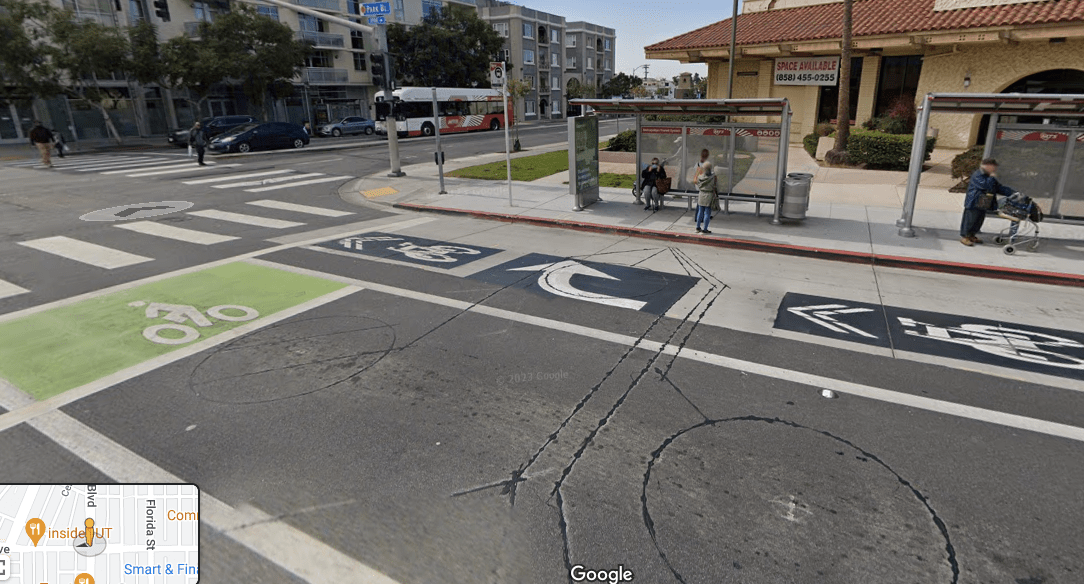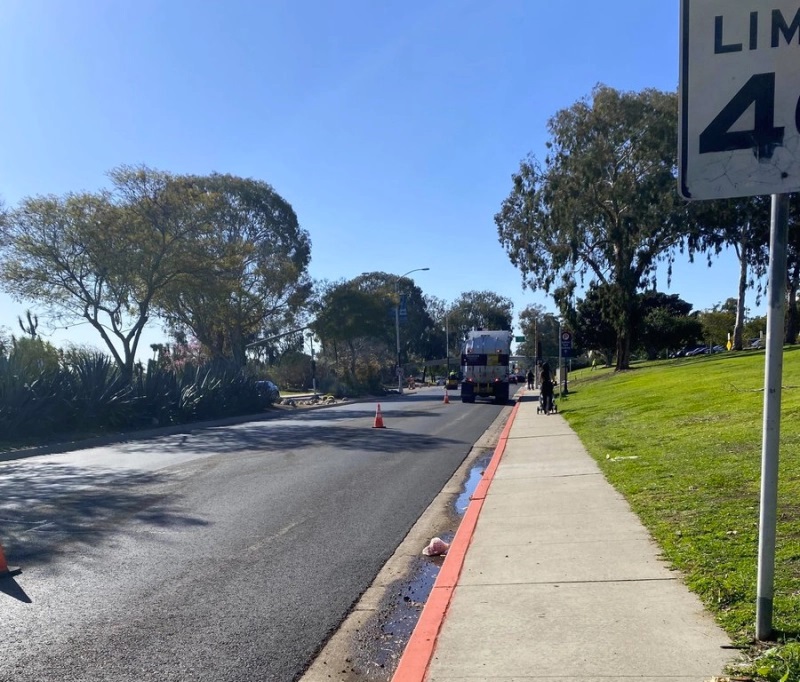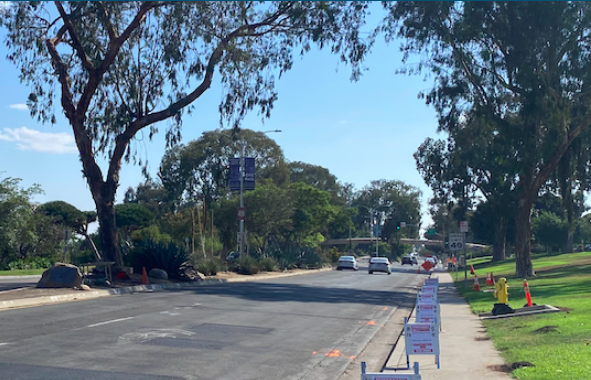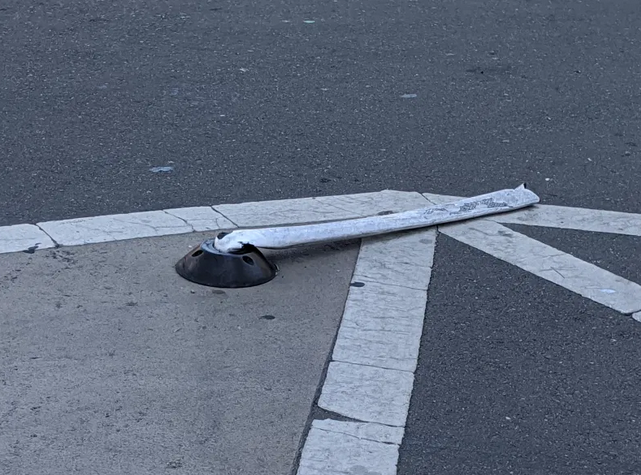Last September, active transportation advocates in San Diego were happy to learn that not only would their request for bike lanes though Balboa Park be granted, but the city also decided on its own to add dedicated bus lanes throughout much of the corridor. Construction is starting now and should be finished in four to six weeks, according to the city.
Bike SD is planning to host a ride to celebrate the new lanes once they are finished.
The advocates are thrilled because they did not expect a quick response when they came up with the campaign, Safer Park Blvd for a Better Balboa Park. The city had planned to do some drainage and repaving work on Park Boulevard, so Bike SD decided to ask them to add bike lanes to the project. The request was initiated through one of San Diego's community planning groups, which are not generally known for enthusiastically embracing new urbanist ideals like bike lanes, transit, and dense housing.
One of Bike SD's advocates was on the board of Uptown Planners, the community planning group for several local well-off neighborhoods. They wrote a letter to the city asking for bike lanes on Park Blvd as well as several other roads in Balboa Park, and submitted it to the Uptown Planners board for their approval.
"It was a laundry list of requests," said Anar Salayev, Executive Director of BikeSD. "The Uptown Planners board voted to support the letter, but they expected nothing to come of it. The sense was that this would never happen."
That was in the fall of 2021 - and now construction is happening. "It was one of those instances you never expect in our public advocacy work - for the results to materialize so quickly," said Salayev. The city began developing options and produced several design alternatives earlier this fall.
"One of the options [developed by the city] had a complete bus-only lane throughout the entire corridor," said Salayev. "We were blown away that it was on the table." Community members weighed in to support both the bike and bus lanes - but there was also opposition. There is always opposition when plans include removing parking.
About three hundred parking spots would be removed to make room for the new configuration, in a park that currently has about 7,500 free spots available, as well as a fare-free tram visitors can ride if they have to leave their car at a distance from their destination.
In the end, the city decided to go ahead with the bike lanes, but cut back the vision for bus lanes to preserve some street parking. Several businesses told the city they rely on the nearby parking and are located too far from the other many parking spots in the park.
The city's misnamed Sustainability and Mobility Department also decided to replace 100 of the parking spaces in a different part of the park. Neighbors and advocates have objected to that plan, which would replace parallel parking with back-in angled parking on Balboa Drive, a dead-end loop on the West Mesa. That road currently serves as a linear parking lot for the smaller, neighborhood-serving fields and playgrounds nearby. The city told BikeSD that they found the existing parking spaces are about 30 percent full on average - yet they plan to restripe the road to fit in more.
The bike and bus lane project, on a 1.2-mile segment of Park Boulevard through Balboa Park, will eliminate one car lane in each direction in addition to most of the street parking on this stretch of overbuilt road. That will leave space for a vehicle lane against the center median, a bus lane to the right of that, and a buffered bike lane against the curb.
The city is calling these "protected" Class IV bike lanes, but the only protection is a painted buffer and soft-hit posts, basically plastic straws set in the pavement every twenty feet. The bus lane - and where there is no bus lane, floating parking - will provide the only protection against vehicles where the speed limit is 40 mph.
Where the dedicated bus lanes disappear, and at bus stops, bikes and buses will be forced to merge. As a "striping only" project, the city did not plan to create floating bus islands that would keep them separated. The photo below, of the current configuration on Park Blvd. south of the park, shows what this will be like. Buses and bike riders will be forced to merge and share the lane.

The city has committed to monitoring the effects of the design and making adjustments in the future as needed. It's likely that the bus lanes, even incomplete, will help improve reliability for the two heavily used bus lines on Park, Route 7 and 215. But the bus-bike merge may prove to be a problem, and could discourage bike riders who otherwise might want to access the park and its attractions by bike.
The planned improvements will be striped between Myrtle Avenue on the north end and Presidents Way to the south. Further connections will be necessary for riders to be able to get to and from the park by bike, but there are no plans yet to improve those sections. Caltrans District 11 has committed to creating a "protected bike lane" on the I-5 overpass at Presidents Way, but no plans have been formulated yet.
BikeSD did an analysis of bike ridership through the park before the pandemic and found high levels of bike ridership already along that route. That's without any bike lanes, and without those connections outside of the park. How many more day-trippers, tourists, families, and others might enjoy the park by bike if the project were better?
And when did painted buffers with upright straws set every twenty feet become the engineering standard for "protected Class IV" bike lanes, anyway? At the very least, placing those soft-hit posts much closer together would create more of an illusion of safety for bike riders. But when traffic is heavy - during events and on weekends - those straws will do little to hold back cars that want to get around traffic, and are likely to be flattened pretty quickly anyway, as has been seen in other similar projects.
While the soft-hit posts definitely save the city money and simplify the project - which is, after all, just a restriping project - they maybe shouldn't be so comfortable with them as to call the new lanes "protected." Salayev says it is easy to see the differences between bike lanes built by the city of San Diego and those built by the regional government, SANDAG. Those SANDAG lanes - of which there are perhaps ten, built in the downtown and central mesa - use cement hardscape, for example.
The weak design might also be a result of the dominance among advocates, until recently, of vehicular cyclists. People who believe that bike riders are better off riding with traffic dominated discussions about bike infrastructure throughout the state - throughout the U.S., really - for forty years, but they had an especially strong hold on discussions in San Diego, where they vehemently opposed separating bikes from car traffic. BikeSD got its start as a response to that, said Salayev. It started life as a progressive offshoot of the San Diego Bike Coalition, advocating for people of all ages and abilities to be able to ride safely rather than just fit and aggressive riders.
Although the Bike Coalition has slowly come around - even as other bike advocates admit mistakes they've made in the past - the lingering influence of vehicular cycling might be one of the factors in the assumption by engineers that bike riders in general don't need to be protected from speeding cars.









